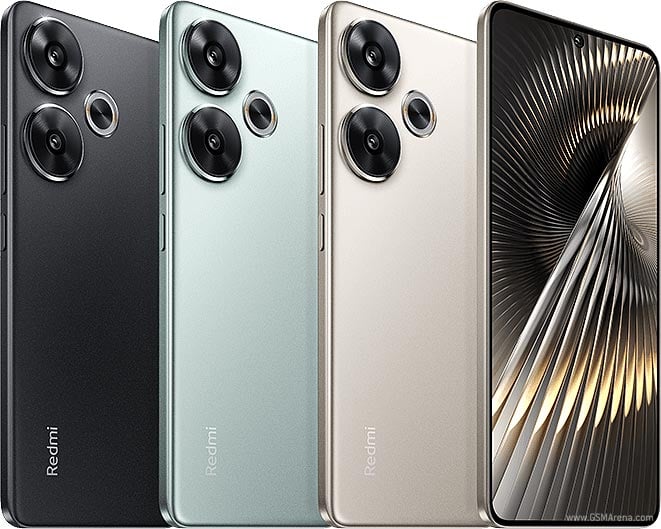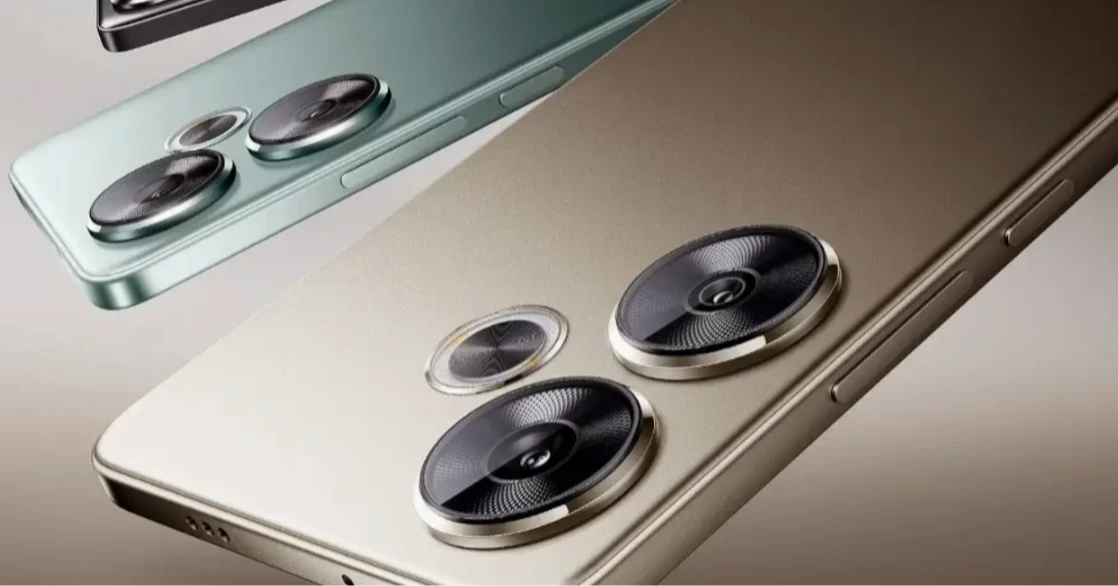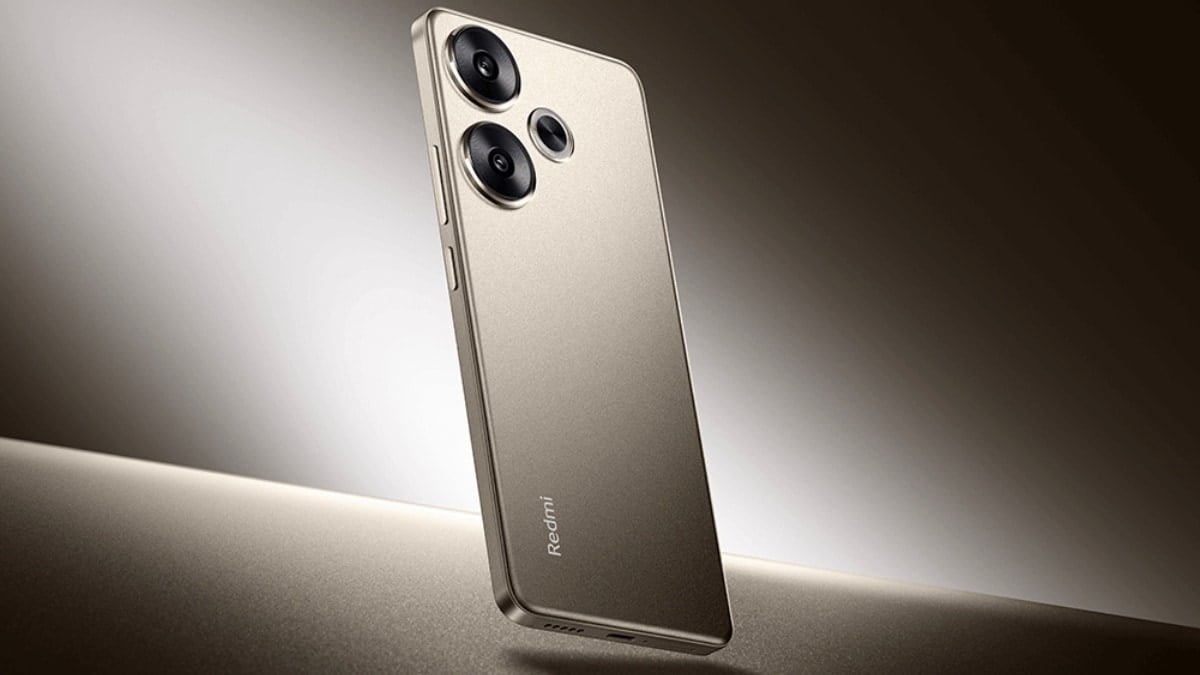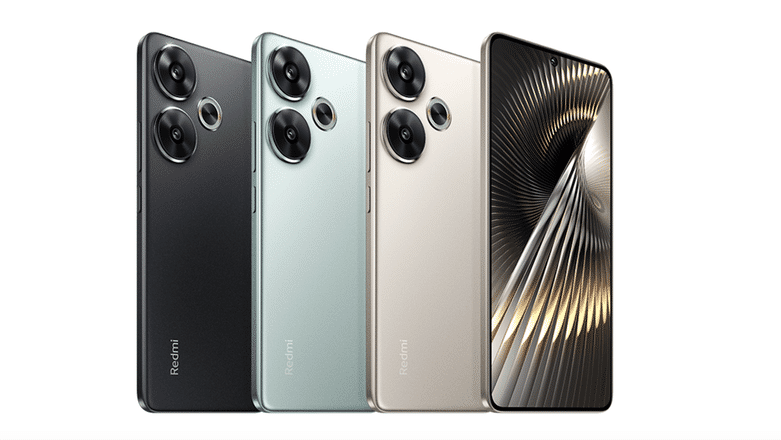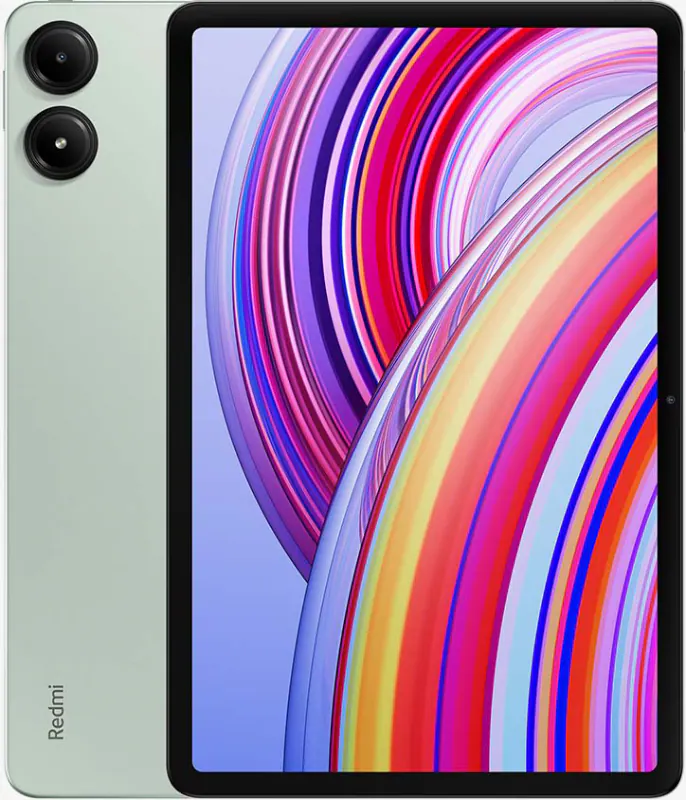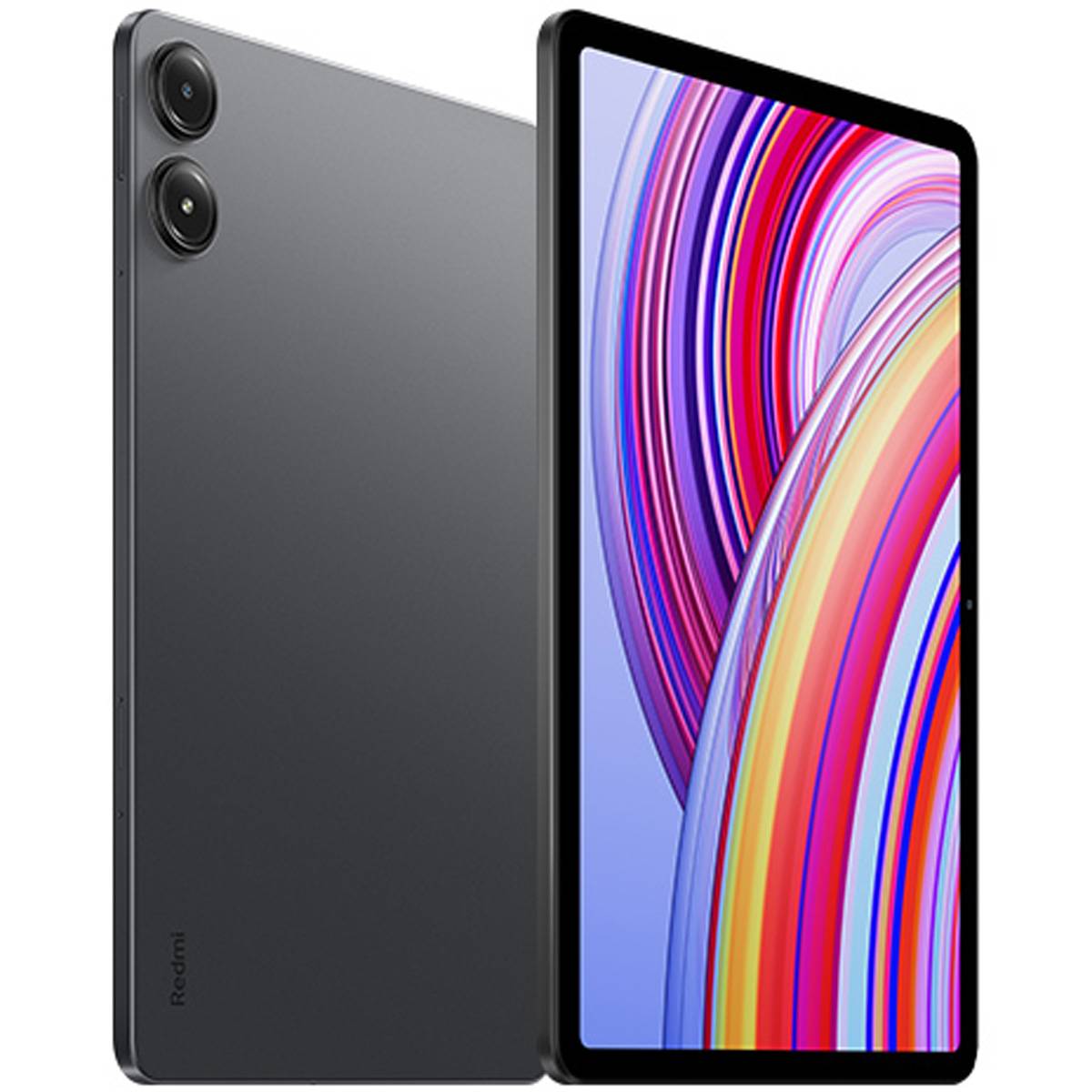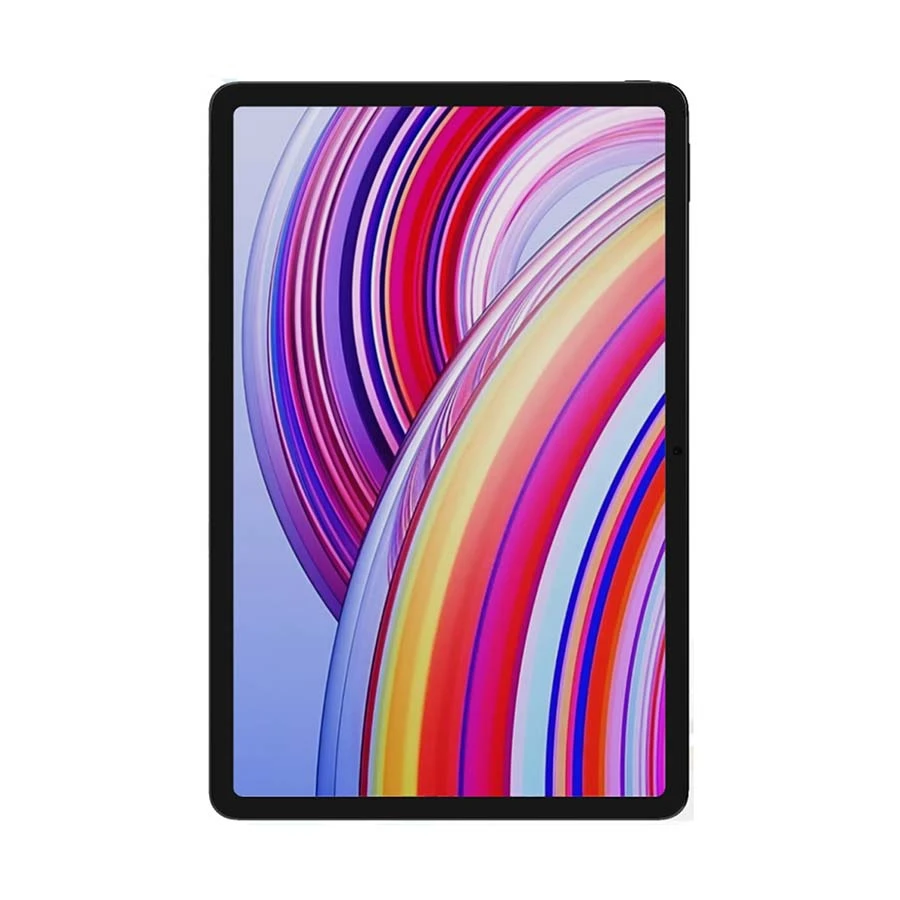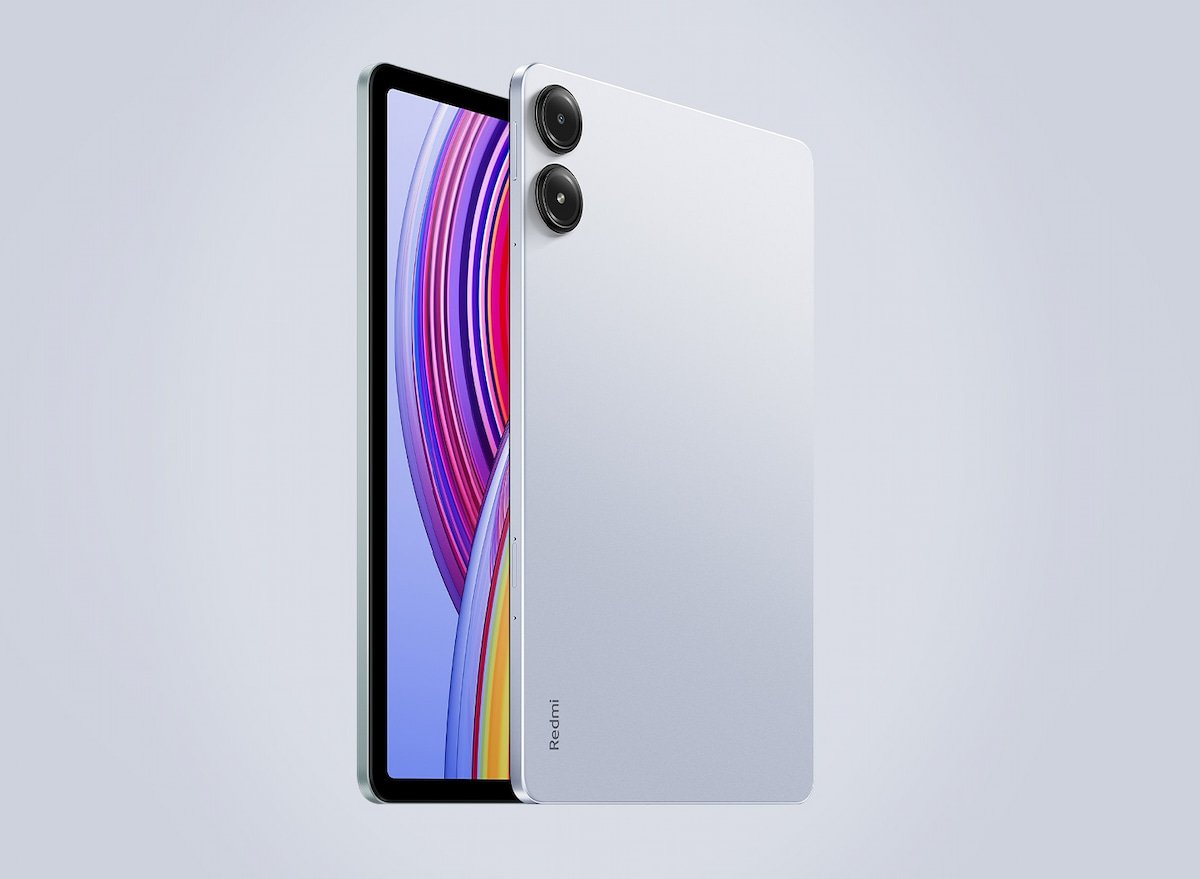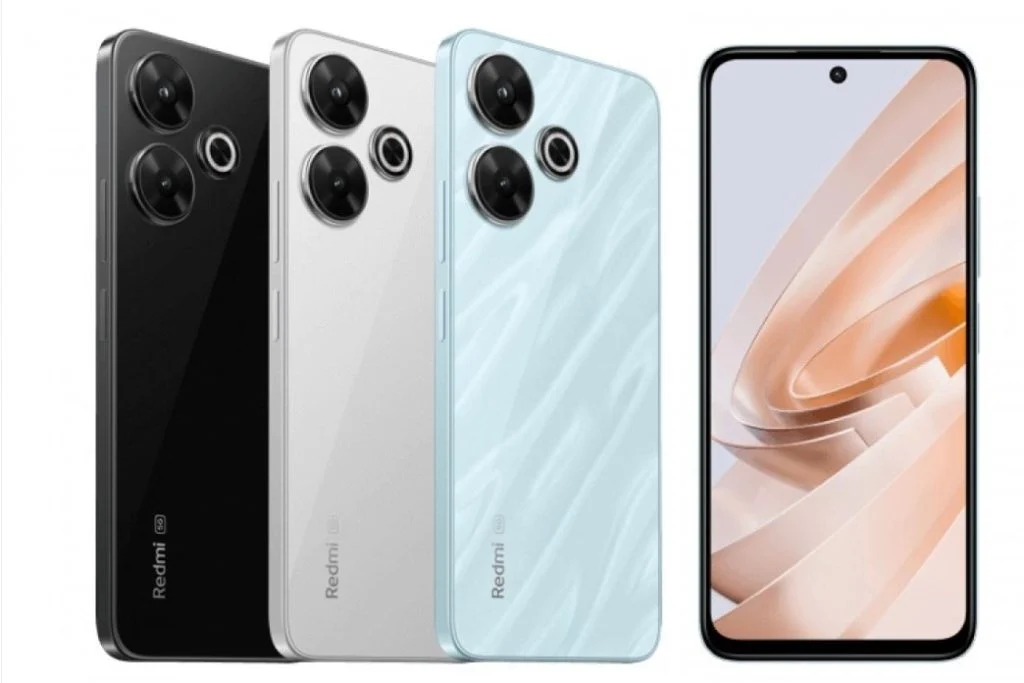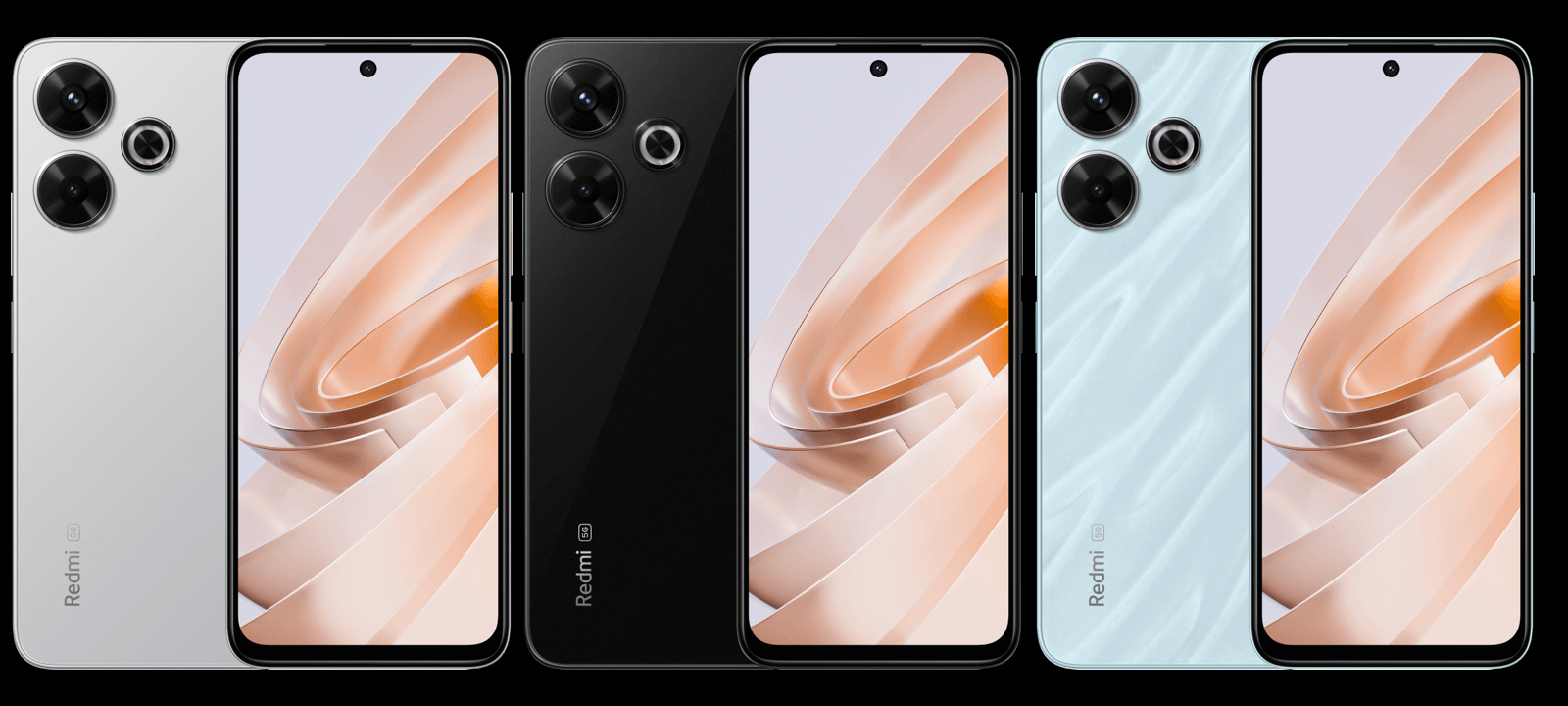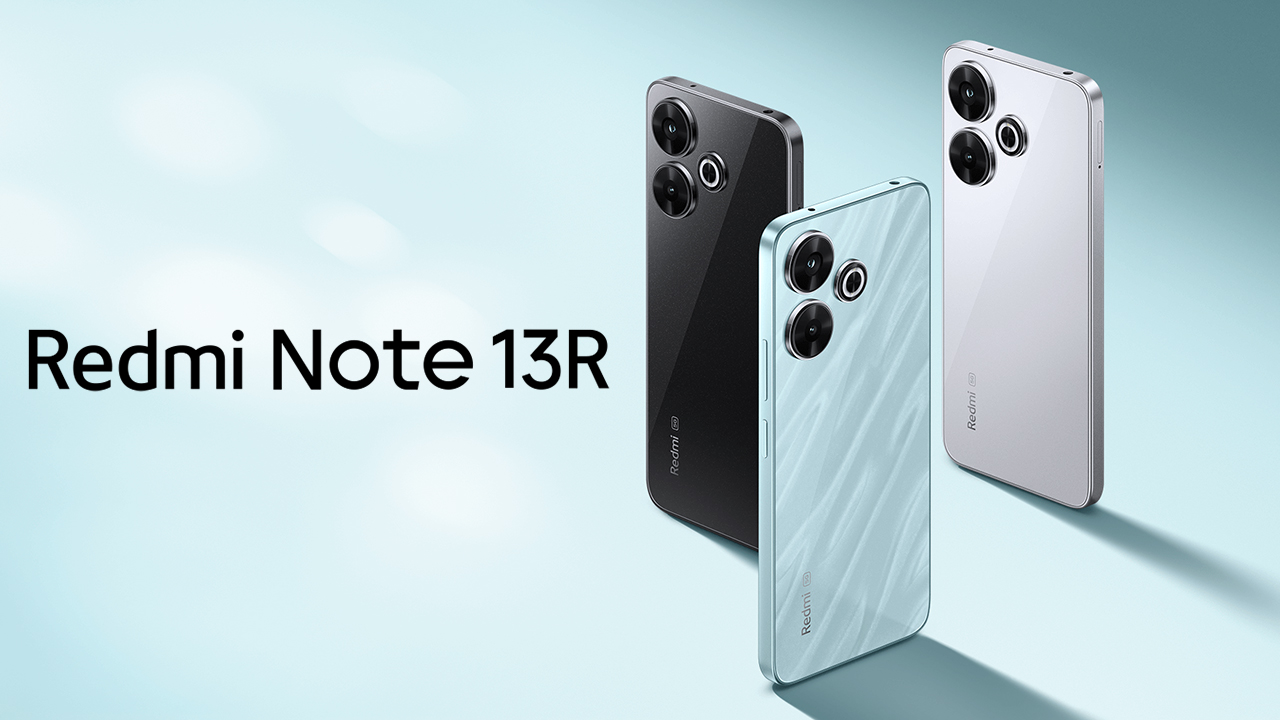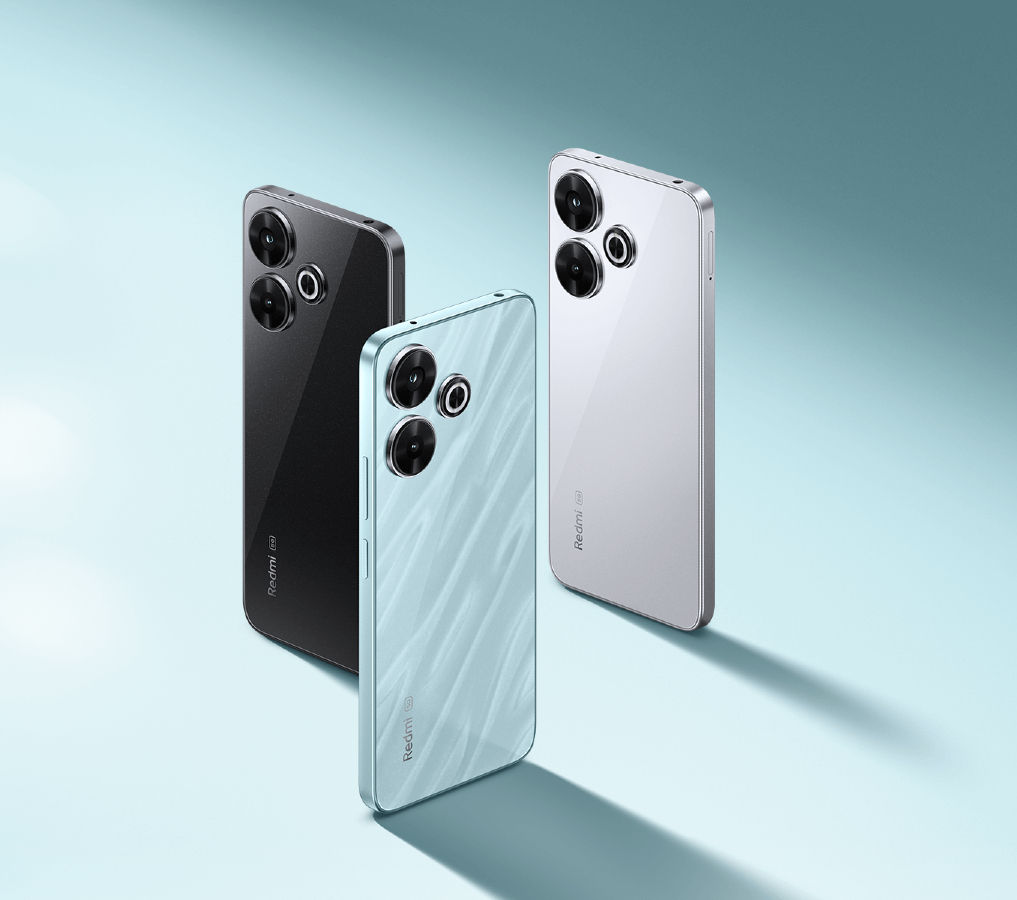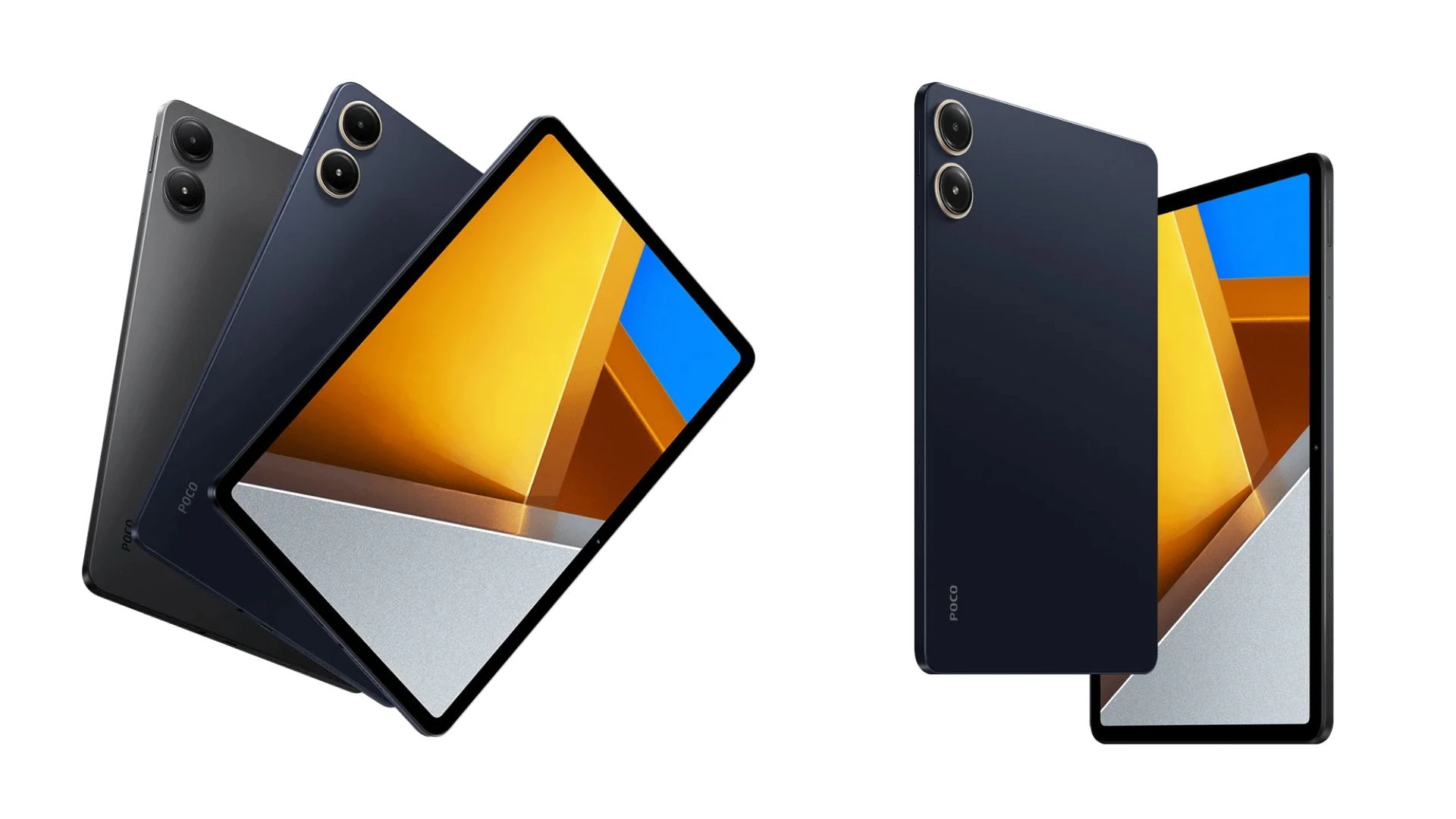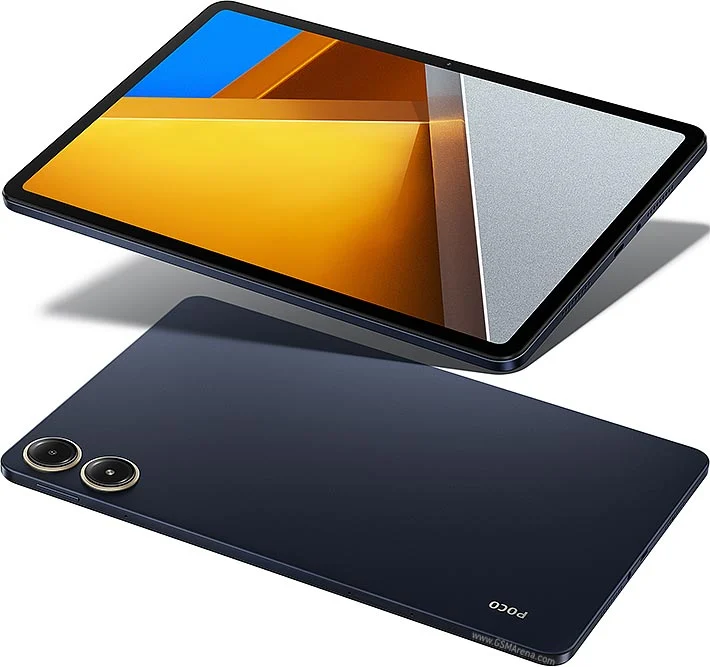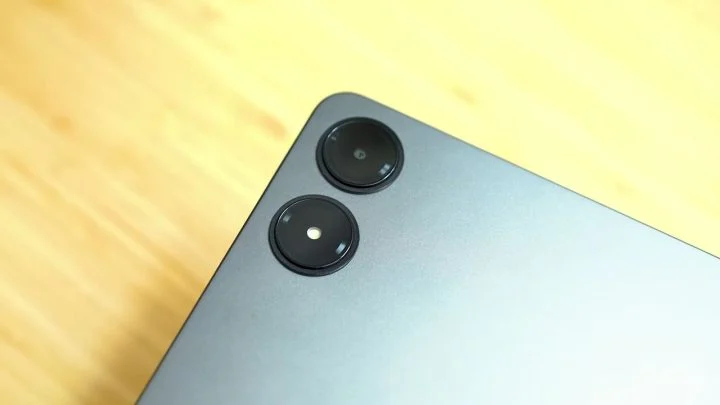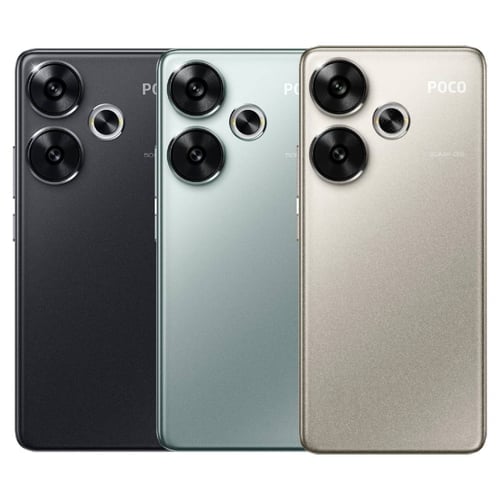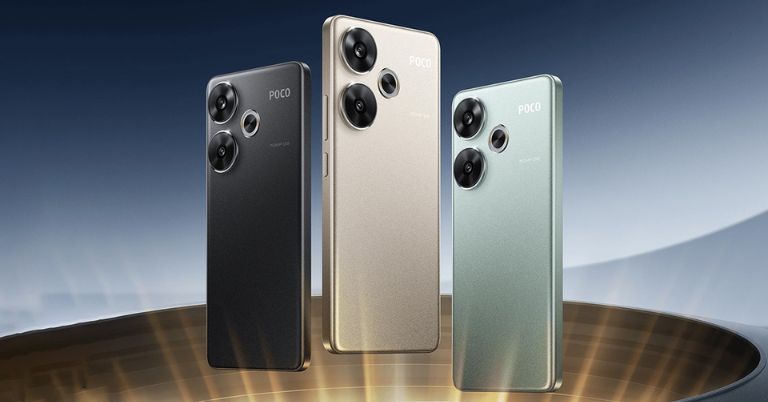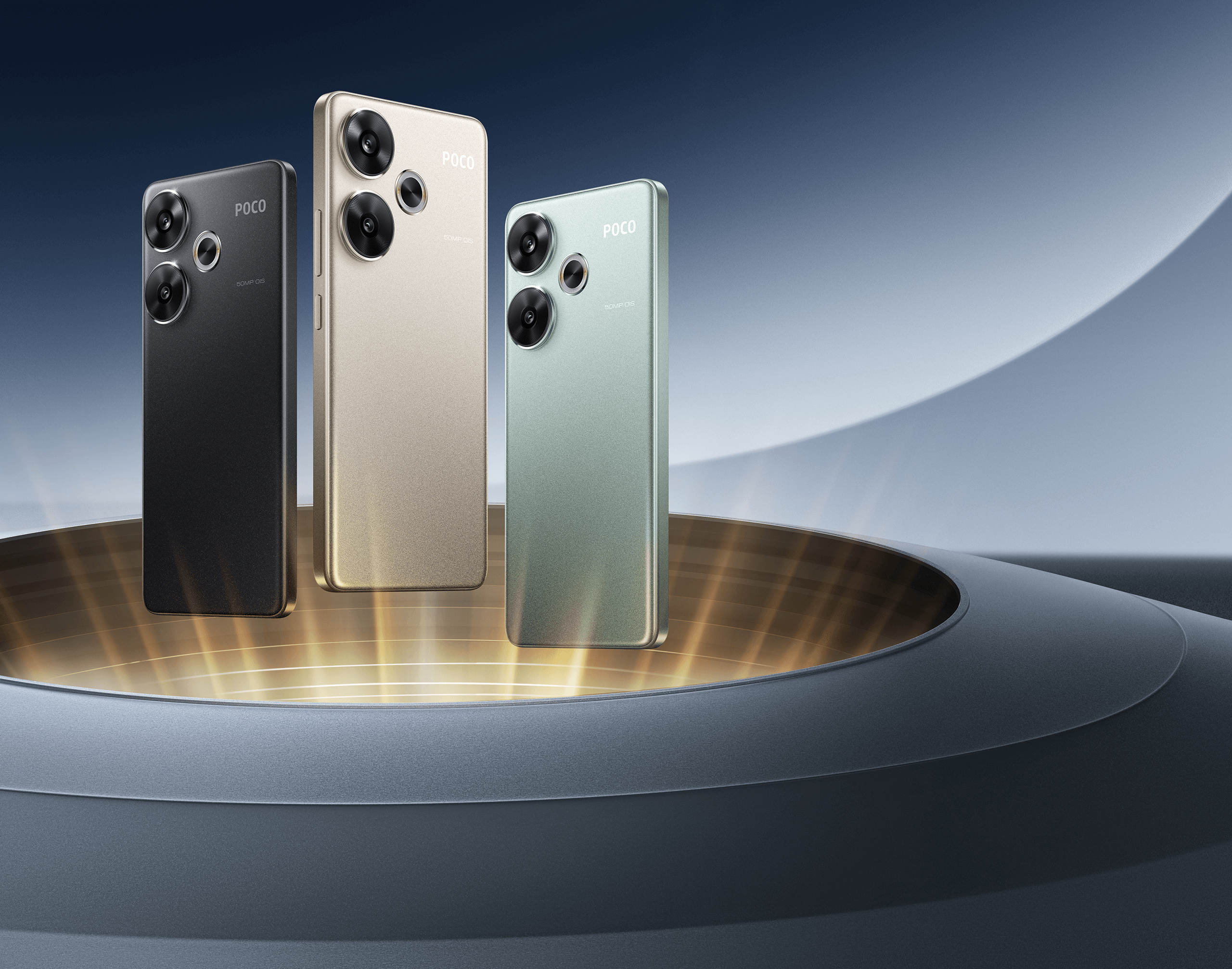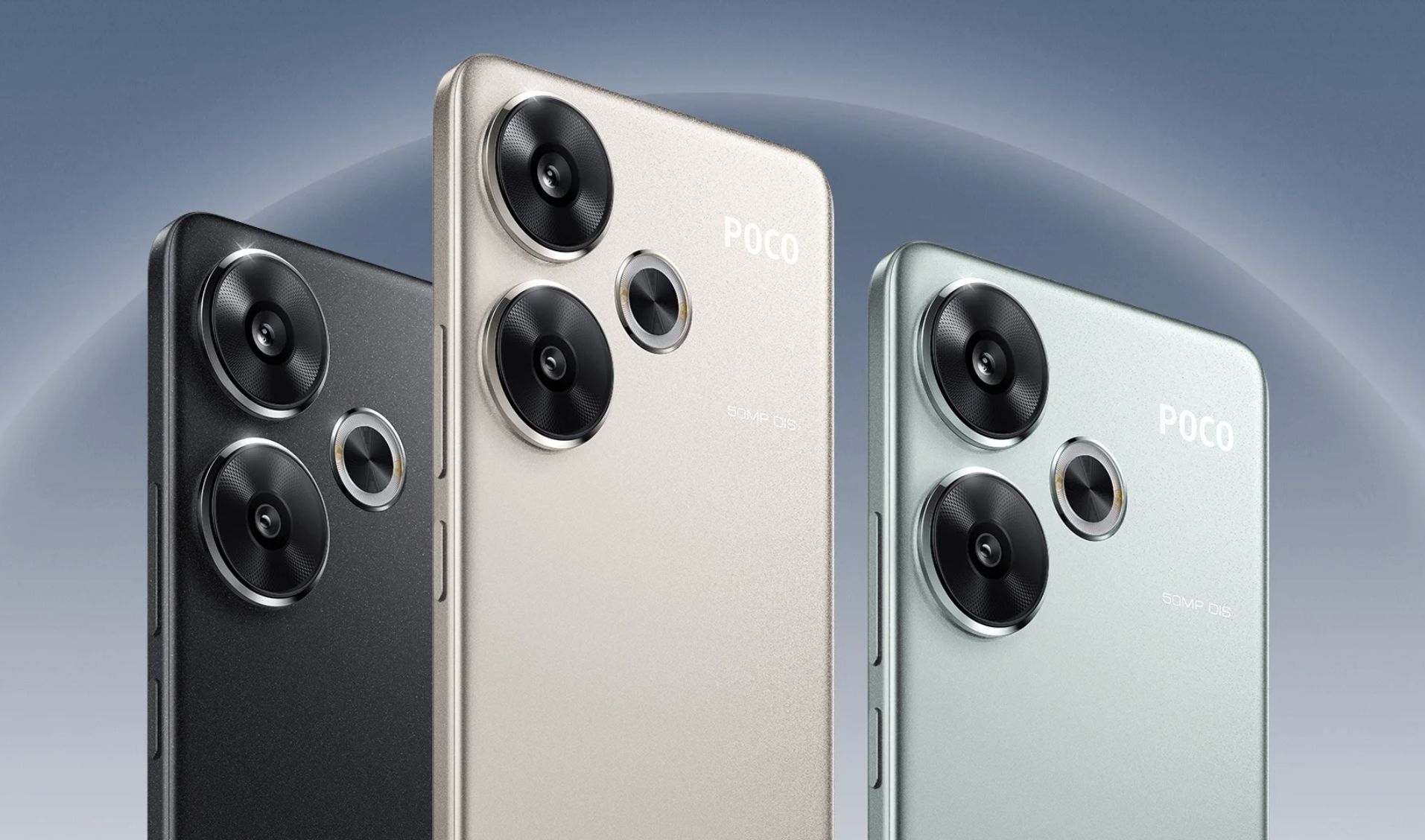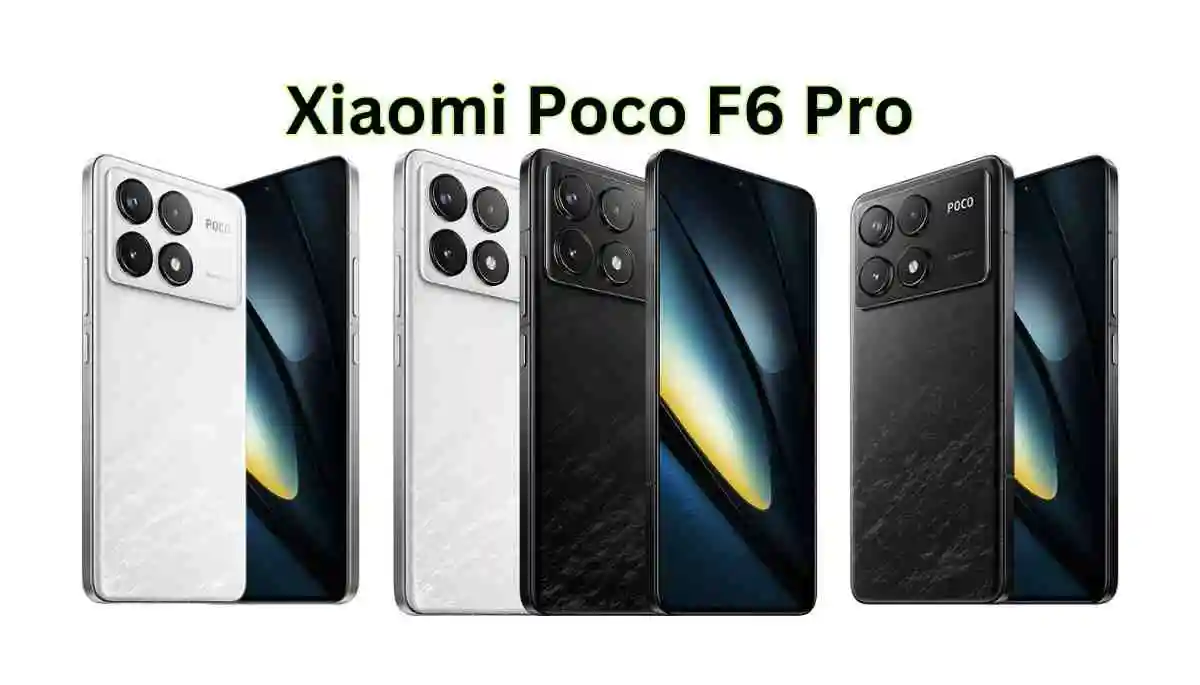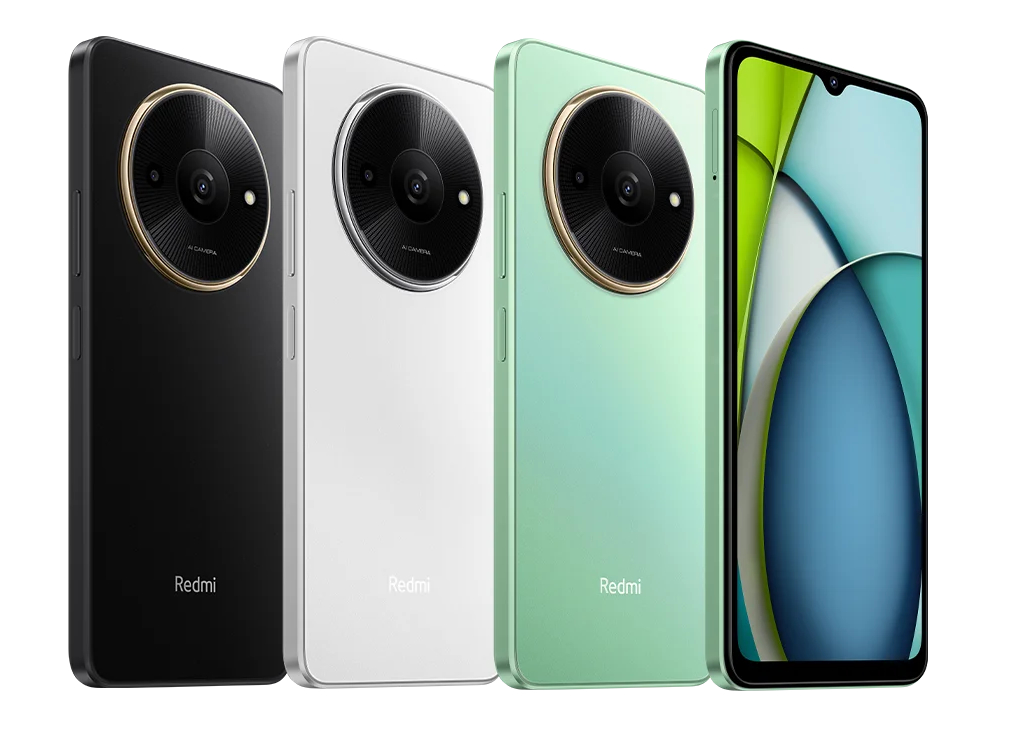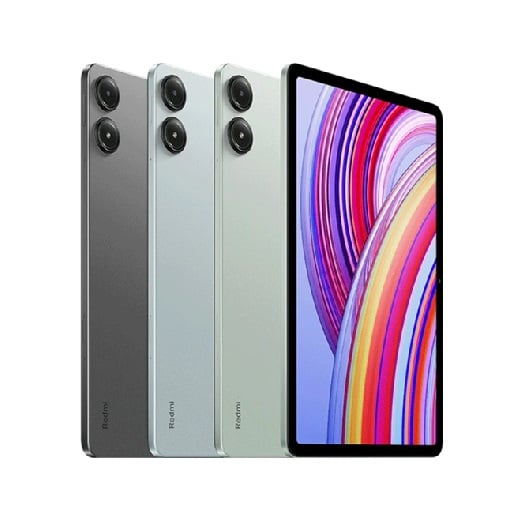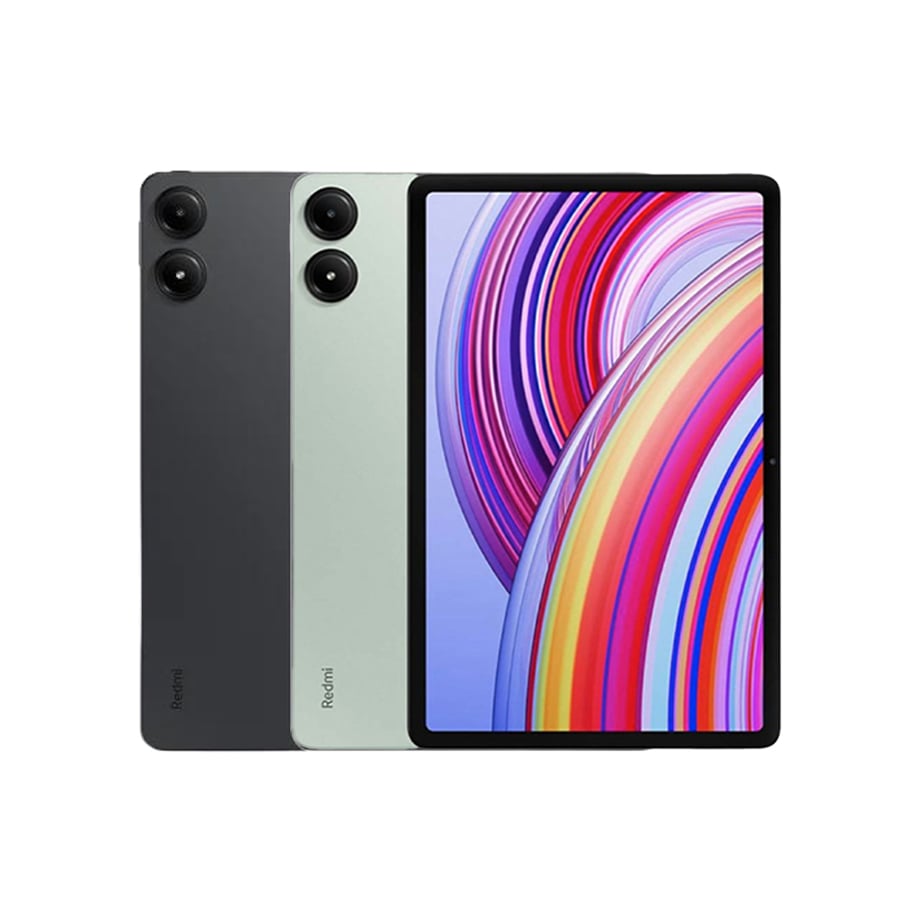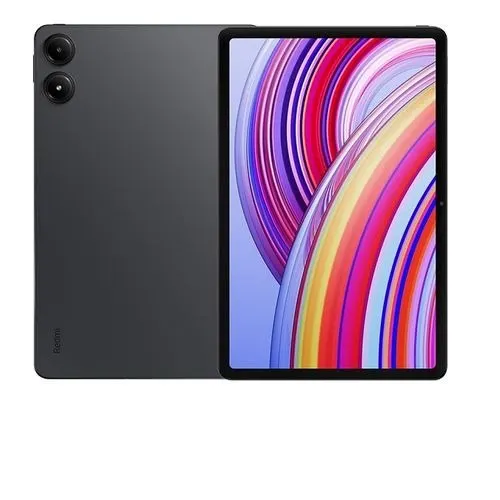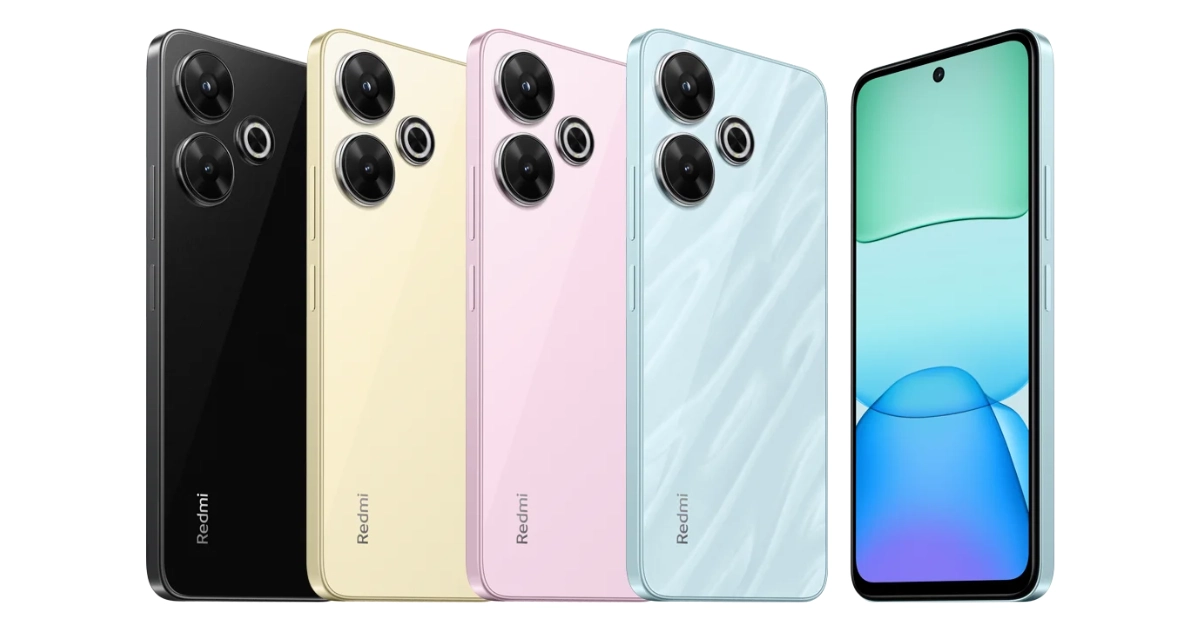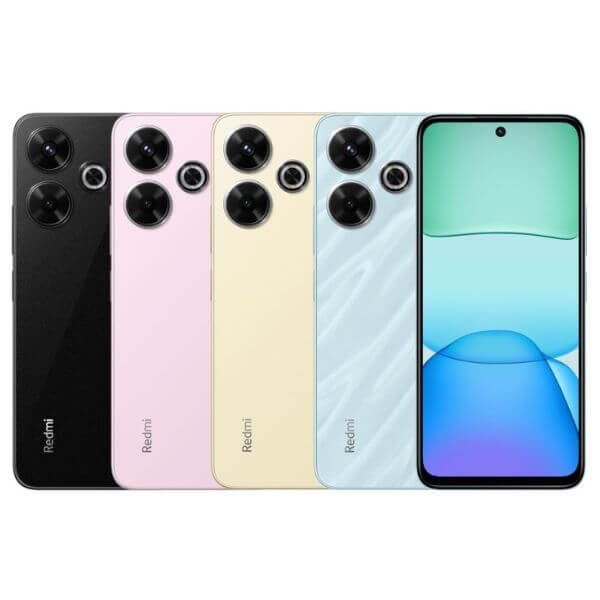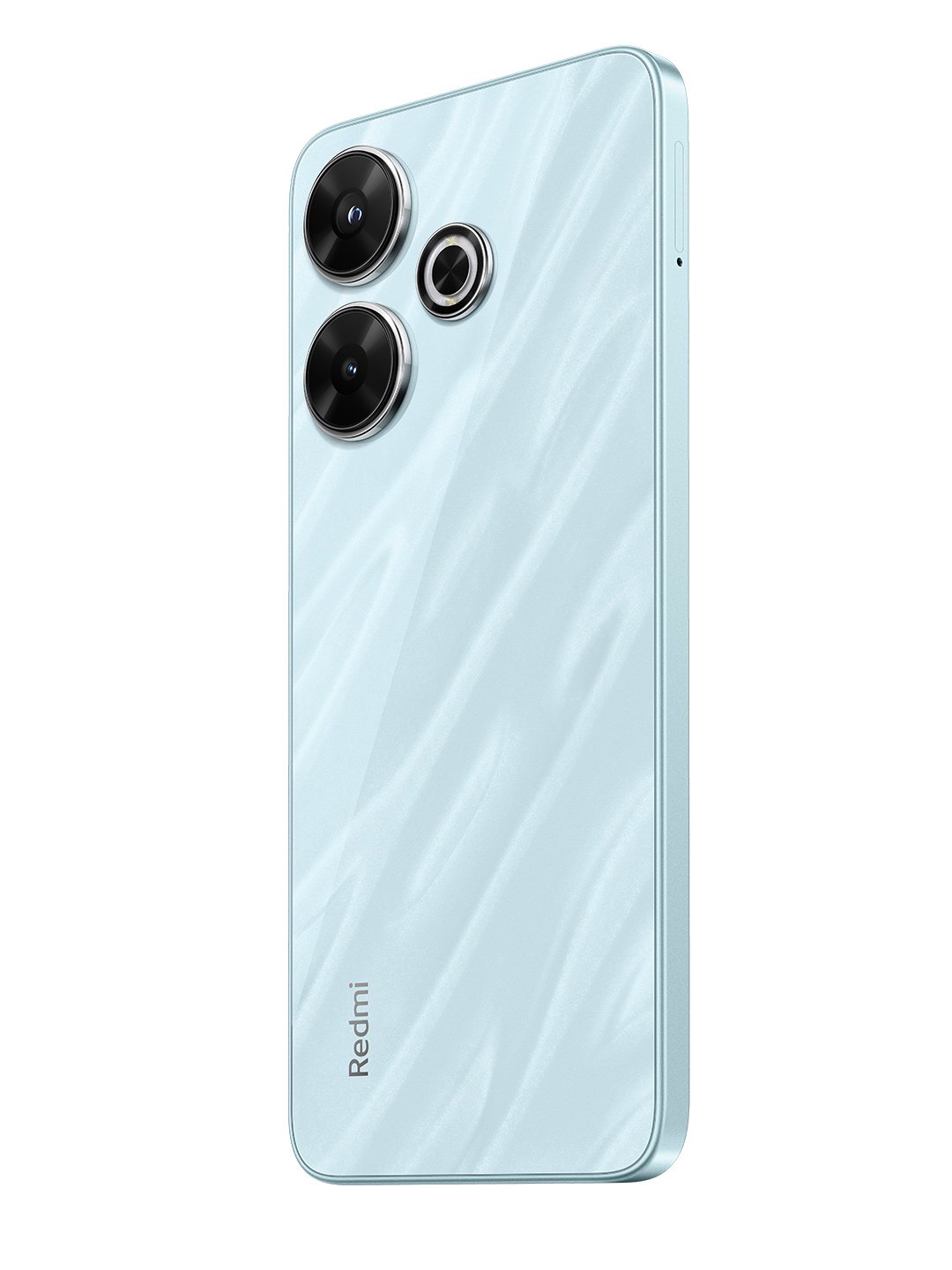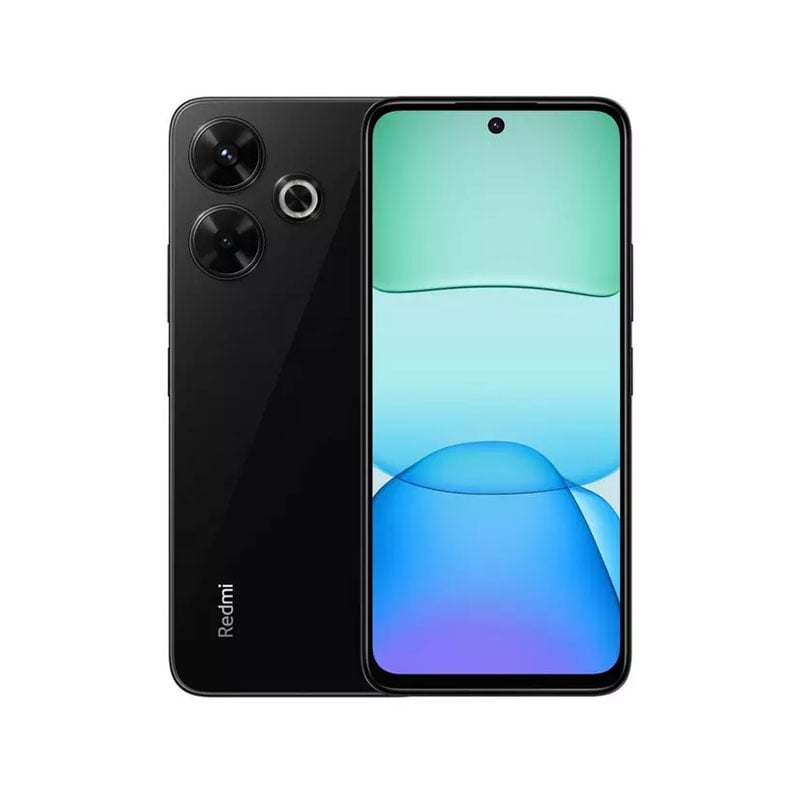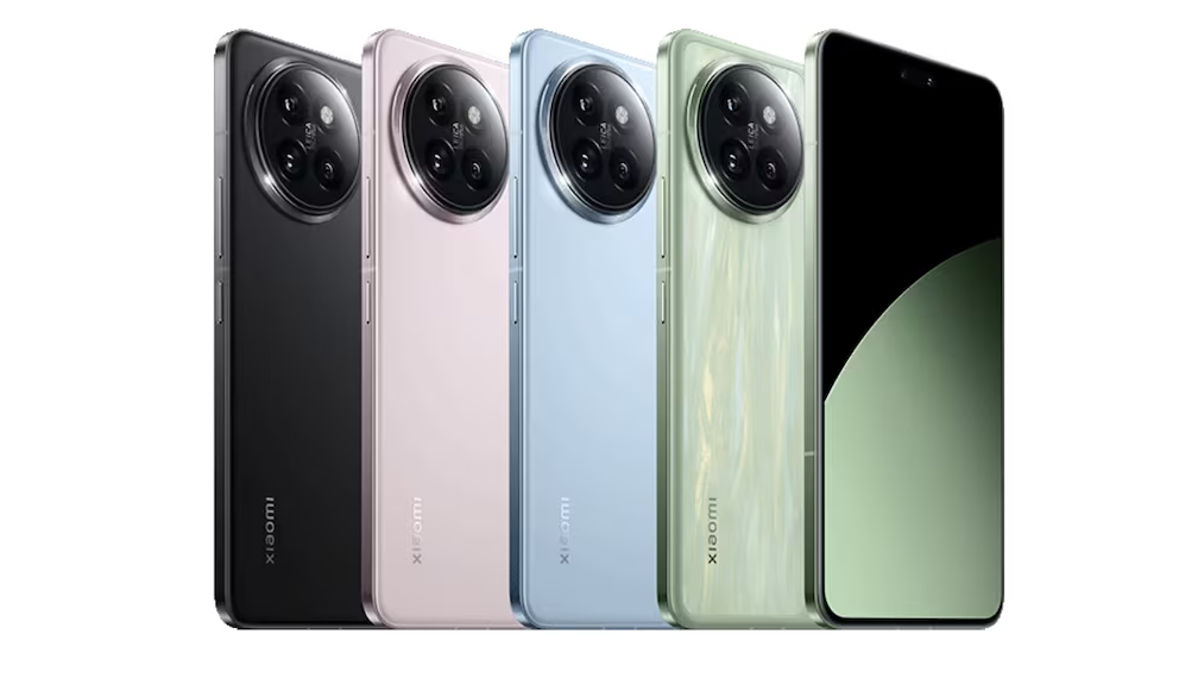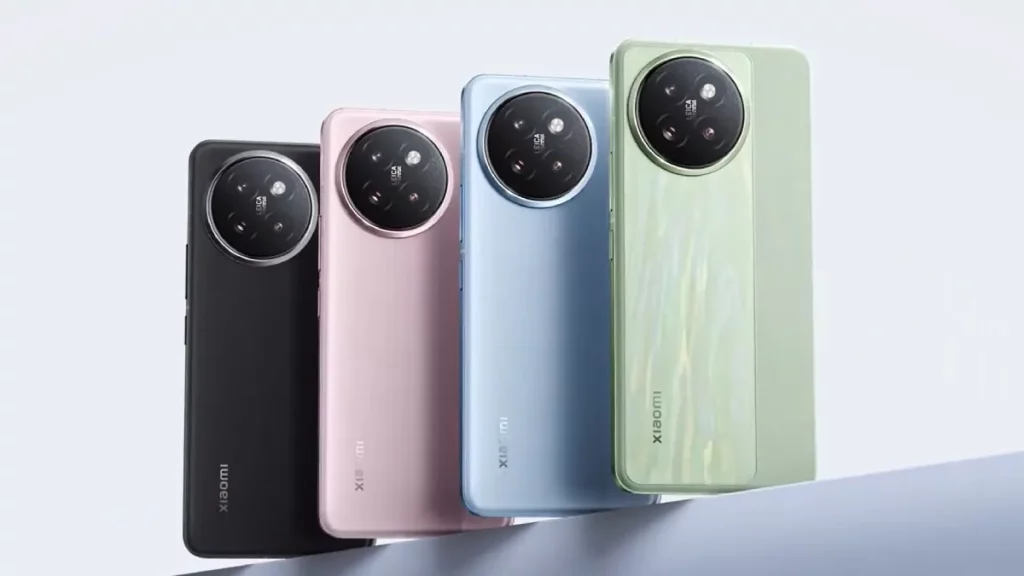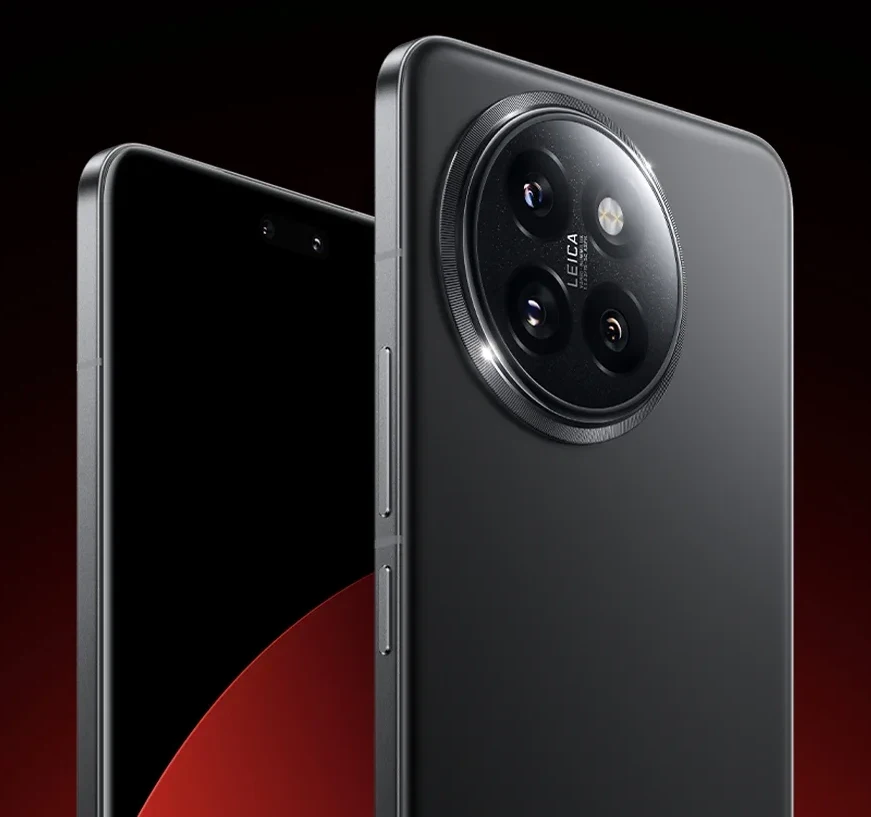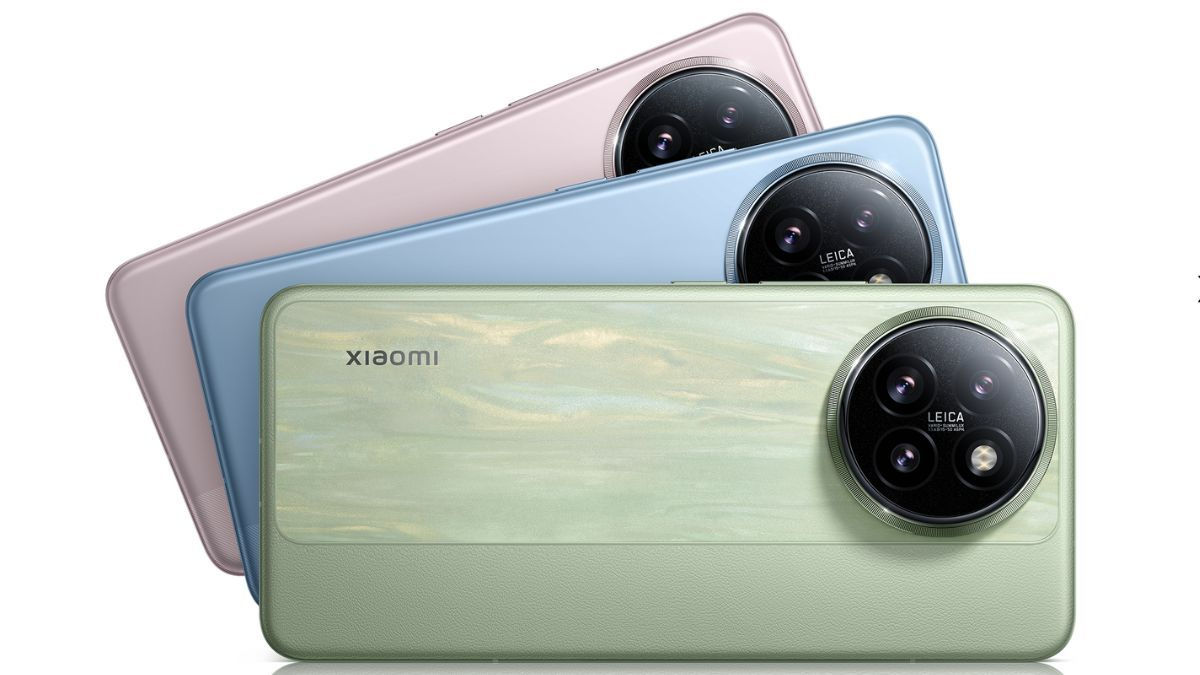Design
The Poco F6 Pro measures 160.86 x 74.95 x 8.21 mm and weighs 209g, with a Gorilla Glass 5 front and a Velvet Glass rear. It’s available in Black and White.
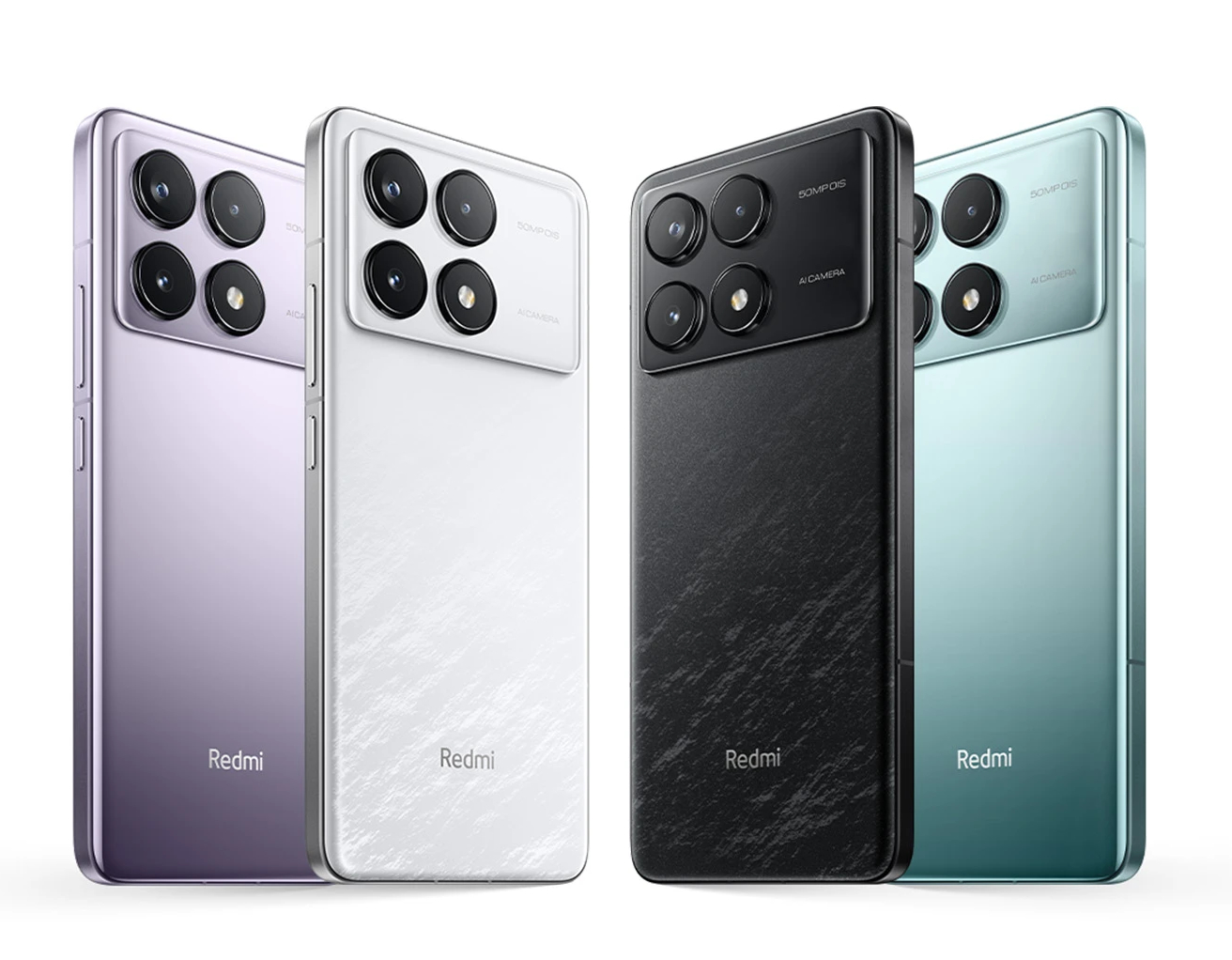
In terms of aesthetics, the Poco F6 Pro closely resembles the X6 models rather than last year’s F5 Pro. It features a flat display, boxy iPhone-like edges, and a subtly curved glass back. The aluminium frame combined with the velvety smooth glass rear gives the phone a premium feel, enhanced by a rock-like pattern that shifts under light. The device’s size and weight add to its overall quality compared to lighter, plastic-framed mid-range phones.
While the velvet-textured back feels luxurious, it’s also extremely slippery. Without a case, you’ll need a firm grip to keep it secure. Fortunately, Poco includes a matte black TPU case in the box, which improves grip significantly.
The Black version features a graphite grey repeating pattern on the back, paired with a mirror-like finish on the camera module. However, the mirrored finish is prone to smudges, undermining the clean aesthetic. Each camera lens is surrounded by a yellow-gold accent ring, adding a touch of style. The White variant offers a lighter shade of the same pattern, appearing more subtle.
Interestingly, Poco has opted out of their signature yellow color variant, which may please some users but disappoint those who prefer bolder designs.
In terms of durability, the Poco F6 Pro carries an IP54 dust and water resistance rating, which feels like a step down compared to the IP64 rating on the cheaper Poco F6. While this isn’t a major drawback for most, it’s worth noting for those in harsher environments.
Another surprising omission is the use of Gorilla Glass 5 on the display, while the cheaper model features Gorilla Glass Victus. While this might be a cost-saving measure, the screen held up well during testing, even without a screen protector, suggesting it’s sufficiently durable.
Screen
- 6.67-inch AMOLED
- 1440 x 3200 resolution
- 120Hz refresh rate
- 4000 nits peak brightness
The Poco F6 Pro’s display is one of its standout features. It offers a 1440 x 3200 resolution with a pixel density of 526 PPI, outperforming many flagship models.
The 120Hz refresh rate ensures smooth scrolling and gaming while dynamically adjusting to 60Hz to conserve battery life. Though it doesn’t feature the 1-120Hz LTPO range found in some competitors, it’s still highly responsive.
Brightness is another strength, with the screen capable of 4000 nits peak brightness in specific conditions. This makes it ideal for outdoor use, even under direct sunlight. The flat display design also eliminates distracting edge reflections often seen on curved screens.
The screen supports Dolby Vision, HDR10+, and 12-bit color, making it perfect for streaming HDR content from apps like Netflix or Prime Video. Colors are vivid and accurate, with deep contrasts and dazzling highlights.
Customization is a strong suit with HyperOS, offering advanced color calibration options, including tweakable DCI-P3 and sRGB modes. It also prioritizes eye health with TUV Low Blue Light, Flicker Free, and Circadian Friendly certifications, along with a PWM dimming rate of 3840Hz to reduce flickering.
Cameras
- 50MP f/1.6 main camera
- 8MP f/2.2 ultrawide
- 2MP f/2.4 macro
- 16MP selfie camera
The Poco F6 Pro’s camera array features four circular modules, suggesting flagship quality, though the reality is more mixed.
The 50MP main sensor performs well, delivering sharp details, wide dynamic range, and good low-light performance. The 2x zoom mode offers solid results in daylight but struggles in low light due to noise and quality drop-offs.
The 8MP ultrawide delivers consistent color matching with the main sensor but lacks detail and autofocus, making it unsuitable for close-ups. The 2MP macro, hidden in the camera settings, adds little value due to its low resolution and limited focusing ability.
The 16MP front camera captures decent selfies with Xiaomi’s portrait mode adding some polish, but it lacks autofocus and maxes out at 1080p 60fps for video.
For video, the main sensor supports up to 4K 60fps or 8K 24fps, though the latter isn’t significantly better and produces massive file sizes. The 8K video is stabilized, which is a rarity at this price point. Unfortunately, the ultrawide camera is capped at 1080p 30fps.
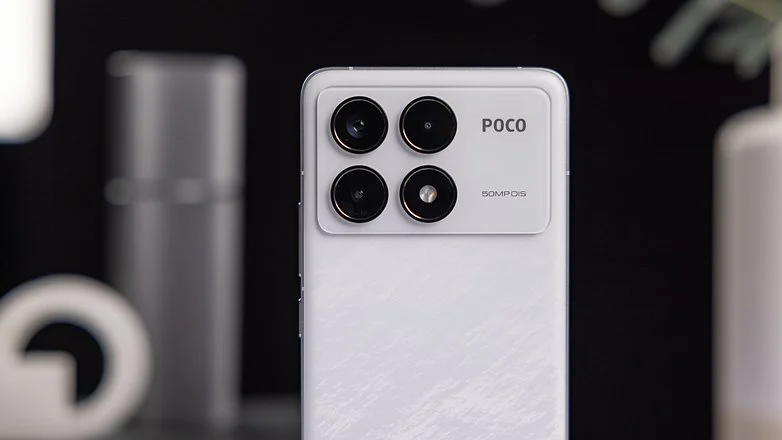
Performance
- Qualcomm Snapdragon 8 Gen 2
- 12GB/16GB RAM
- 256GB/512GB/1TB storage
- Dual stereo speakers with Dolby Atmos
Powered by the Snapdragon 8 Gen 2, the Poco F6 Pro delivers flagship-level performance. Whether multitasking, gaming, or general usage, it feels snappy and responsive.
The phone supports storage options up to 1TB and 16GB RAM, with the base model starting at 12GB RAM and 256GB storage. While it lacks expandable storage, its pricing is competitive, with the 1TB model priced under £600.
Gaming is a highlight, with even demanding titles like Genshin Impact running smoothly at max settings. The phone remains cool thanks to its effective cooling solution.
Audio quality is another strong point, with dual stereo speakers delivering clear mids, sharp highs, and respectable bass. Dolby Atmos enhances immersion for both gaming and music.
Software
- HyperOS based on Android 14
- Advanced AI image editing features
- Excessive bloatware
The Poco F6 Pro runs HyperOS, Xiaomi’s Android skin replacing MIUI. While it offers smooth performance and extensive customization options, it also brings over MIUI’s weaknesses, such as bloatware and redundant system apps.
One standout feature is the AI-powered image editing, which allows tools like generative image expansion and advanced object erasure. These features work well and are comparable to Samsung’s offerings, though they require downloading additional plugins.
The split notification and quick settings menus mimic iOS functionality but may feel unfamiliar to Android users.
Battery Life
- 5000mAh battery
- 120W wired charging (charger included)
- No wireless charging
Battery life is solid, with the 5000mAh capacity lasting a full day of regular use. Heavy usage can push it to its limits, but the 120W charging more than compensates. A full charge takes just 25 minutes, with 30-40% restored in just five minutes.
The lack of wireless charging is disappointing, especially since the F5 Pro supported 30W wireless charging, but the ultra-fast wired charging mitigates this drawback.
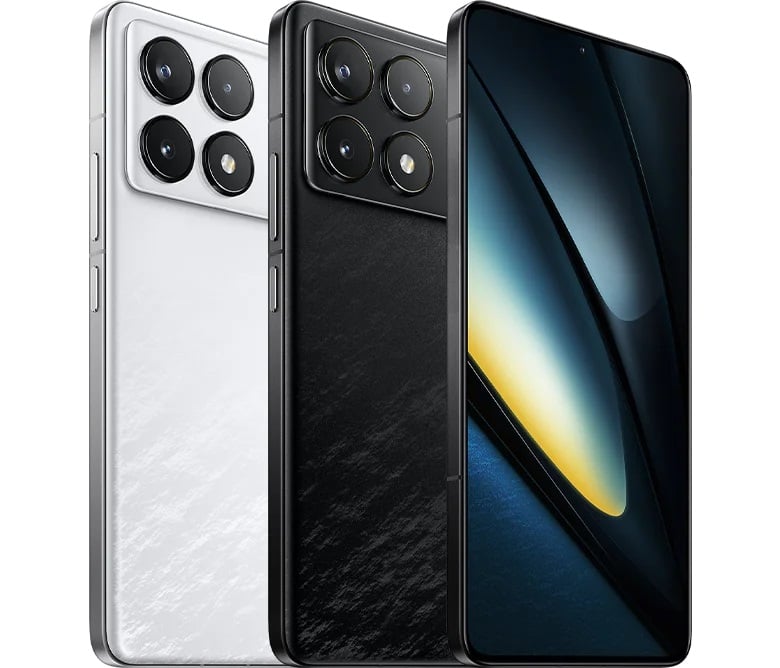
Final Thoughts
The Poco F6 Pro offers flagship-like performance at a fraction of the price. Its brilliant display, powerful processor, and premium build make it an excellent option for gamers or anyone seeking high-end features without breaking the bank.
However, its camera performance and software bloat may disappoint photography enthusiasts and fans of minimalist Android skins.
Pros:
- Stunning AMOLED display with high resolution and brightness
- Flagship-level performance
- Premium build quality
- Ultra-fast wired charging
Cons:
- Cameras are mid-range at best
- No wireless charging
- Excessive pre-installed apps
If you’re looking for a powerhouse phone under £600, the Poco F6 Pro is an easy recommendation.
